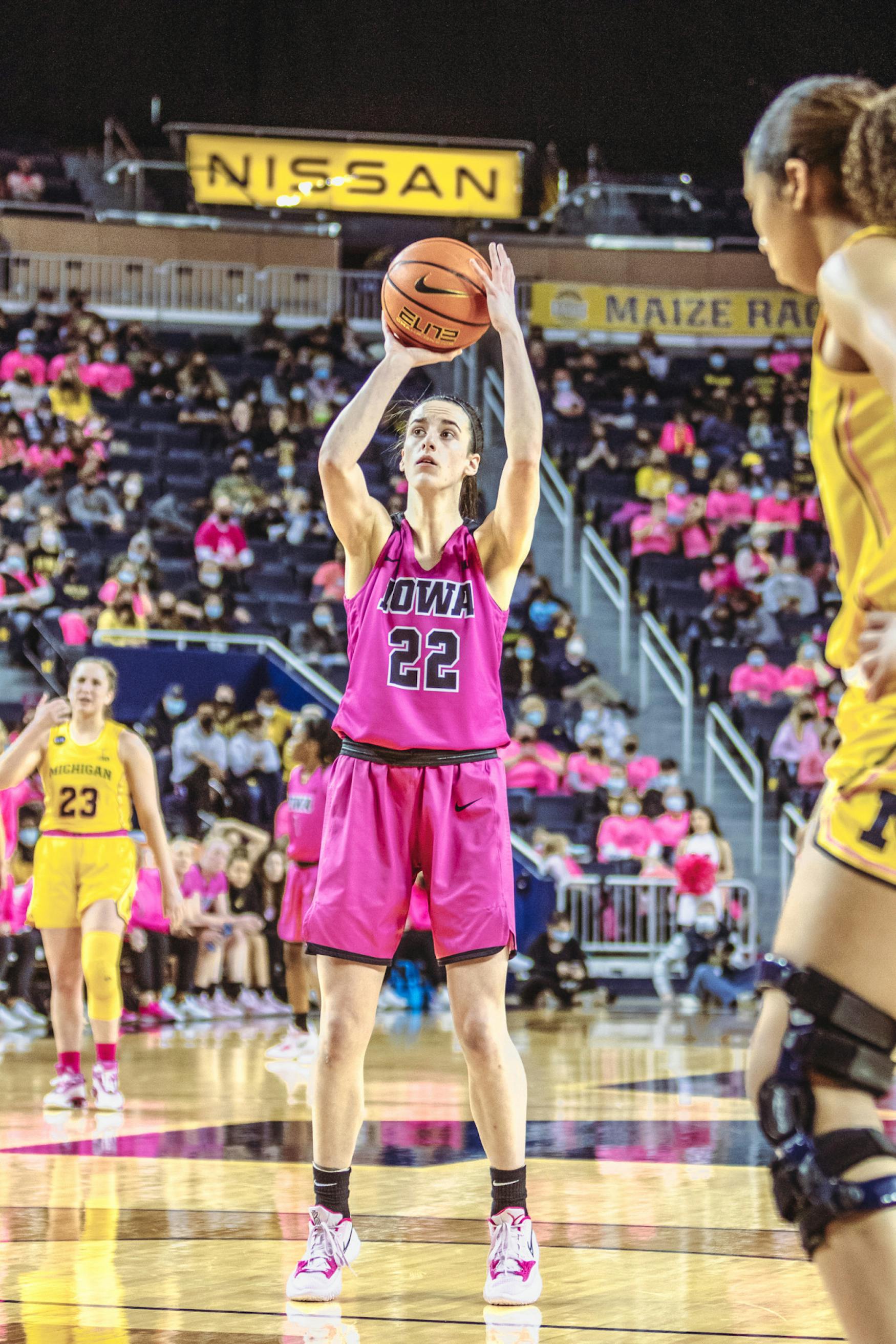Collegiate Women's Basketball Making History
Caitlin Clark, Tara Vanderveer and many other women’s collegiate basketball players are becoming increasingly more common as household names and pioneers.
If anyone has been kicking ass lately, it’s Division I women’s collegiate basketball players. Following doubts of the NCAA’s commitment to women’s sports as a whole, NCAA women’s basketball is racking up viewers, revenue and support. In the past year, their players and games broke record after record, proving that while the NCAA has wavered in their support, the fans have not.
Women’s college basketball brings one name in particular to mind — Caitlin Clark. The University of Iowa Hawkeye continues to stun and impress more than just fans with her record-breaking statistics. She scored her 3,000th career point earlier this season — and is the 15th woman to do so in NCAA basketball — after registering 35 points against Iowa State University.
As though that isn’t enough to etch her name in the history books, that game became her 41st 30-point game, more than anyone in NCAA basketball — regardless of gender —-has acquired in 25 years. And recently, against Michigan State University, Clark marked her 10th 40-point game. Her total game points scored most recently grew to 3,389 following Iowa’s matchup against Nebraska. This impressive feat leaves her five points away from becoming the female player with the third most points scored in NCAA history.
To compare, the career point record amongst male Division I players is 3,667 — which is only 140 points higher than the record for female Division I players.
If she sounds unstoppable, that’s because she has been — and not just from scoring. While game points are a key reason she has shot her way to stardom, a December game made her the Big Ten’s all-time assist leader, and she is the only Division I player to achieve over 900 assists and 800 rebounds in her career.
Clark is not the only figure in collegiate women’s basketball making history and headlines. Just this month, Stanford University coach Tara Vanderveer became the winningest coach in Division I basketball history with a total of 1,203 wins, and 267 losses, eclipsing Duke University’s Mike Krzyweski. Long considered one of the greatest collegiate men’s basketball coaches of all time, Krzyweski congratulated Vanderveer in a postgame broadcast.
The success of women’s collegiate basketball hasn’t taken place solely on the court. Women’s Division I basketball has been taking the sports world by storm, and people are tuning in. During the 2022-23 season, ESPN’s viewership scored double- to triple-digit increases in each stage, and the title game attracted 104% of the previous year’s finale’s viewers.
At the 2023 NCAA Women’s Final Four in Dallas, Texas averaged 6.5 million viewers, which is 87% higher than the 2022 Final Four and ESPN’s most-viewed Final Four weekend.
Women’s basketball broke more records during 2023’s March Madness tournament. The championship game, which had not been broadcasted since 1995, averaged 9.92 million viewers with a peak of 12.6 million, making it the most viewed women’s college basketball game on record.
These numerous accomplishments draw more and more attention towards collegiate women’s basketball, a huge win for a sport that, like many women’s sports, is viewed as less important than the men’s leagues. The NCAA got itself in hot water in 2021 as a direct result of dramatic disparities between its treatment of female and male players at tournaments. The women’s weight room facilities were sparse, including only a single rack of dumbbells, none of which went over 30 pounds. Meanwhile, the men’s facilities — located in a hotel ballroom — included not only dumbbells but also squat machines and barbells. According to The New York Times, the men’s food was a “smorgasbord” of “petit filet,” lobster macaroni and cheese and grilled asparagus, while a female player’s video showed a measly meal of “mashed potatoes, a soggy trio of broccoli, cauliflower and carrots, and what she concluded was ‘some kind of meat.’” Aside from the amenities, the men’s tournament is called “The Big Dance,” while the women’s is branded as simply “NCAA Women’s Basketball.”
Regardless, the NCAA’s treatment of women’s sports has not prevented female athletes from going above and beyond, and the accomplishments of players like Clark and coaches like Vanderveer are not just commemorated in simple plaques and articles. They provide inspiration and motivation and serve as role models for girls hoping to follow in their footsteps. If current trends continue, the future of collegiate women’s sports — and professional women’s sports such as the WNBA — looks bright.



Please note All comments are eligible for publication in The Justice.